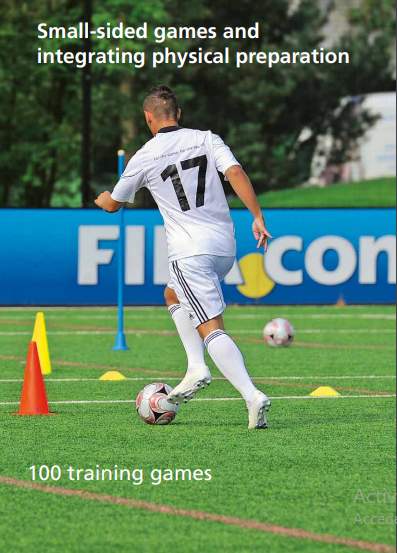FIFA is constantly striving to improve the range of its programmes and information for its member associations to support them in their work.
We are therefore delighted to present this manual, which will strengthen the existing documentation available to the technical departments of all of our members.
Physical activity is vital to children’s growth and fitness plays a key role in modern football, which is why it is essential that footballers have the best tools at their disposal to improve the skills needed for their actions on the pitch.
The information and knowledge in this document will enable all coaches to shape the physical development of their players.
Each stage of development in the training exercises has its own physical characteristics, and the extent to which exertion is stimulated depends essentially on the knowledge and experience acquired.
Coaches will also find instant solutions that deploy playful situations with a view to guiding their players towards predefined objectives.
This manual aims to apply scientific theory to actual game situations and convey the message that every activity on the pitch involves different physical factors that contribute to the player’s development.
Ultimately, the game itself must remain the principle tool with which to attempt to improve a player’s physical potential, and the value of this manual lies in the way that it combines football with the development of the physical capacities that are so important to playing it.
The 100 training games contained in the manual will enable coaches to plan and develop training sessions that integrate all performance-related parameters: technical, tactical, physical and mental. Improve or maintain players’ physiological potential in close conjunction with the technical and tactical aspects of football.
The central theme of this manual is the concept of integrating motor skills specific to football into a player’s physical training via small-sided games.
After a brief résumé of how physical preparation has developed through different systems, the first part of this manual focuses on the theory behind the sessions and covers the basic points, such as the demands of top-level football, the physical qualities of young footballers to be developed and worked on and the problems associated with quantifying the training load, along with a summary on planning the training programme.
The second part contains the practical football-orientated exercises, i.e. a significant number of situations based on small-sided games, outlining the organisation of the work, the playing surface and the number of players required.
The technical and tactical themes covered and the physical qualities targeted and developed are defined in accordance with the targeted training loads.
This tool can therefore be adapted by anyone with experience of football and football training to their own specific needs.

